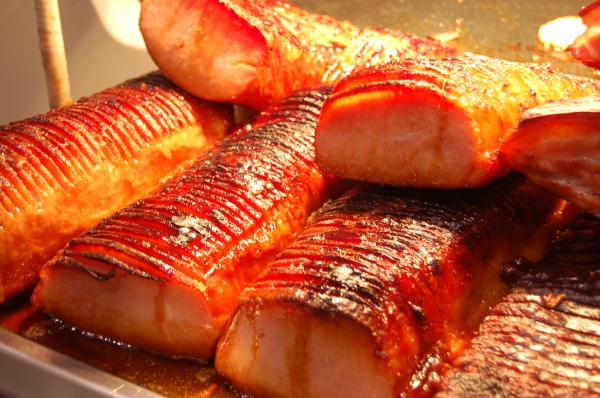Facts About Peameal bacon
Peameal bacon is a distinctive variety of wet-cured, unsmoked back bacon crafted from lean, boneless pork loin and coated in cornmeal. Originating in Southern Ontario, it is often attributed to 19th-century Toronto pork packer William Davies. The term "peameal" harks back to an old preservation technique involving dried and ground yellow peas, although cornmeal has since supplanted this practice.
When in Toronto, a peameal bacon sandwich from the renowned St. Lawrence Market is an essential culinary experience. These sandwiches are a hallmark of the city.
So, what sets peameal bacon apart? It is brined in a salt-and-sugar solution, imparting a subtly salty-sweet flavor reminiscent of fresh ham. When cooked, it boasts a juicy texture complemented by a crispy cornmeal crust, making it exceptionally delectable. Unlike American-style Canadian bacon, it is typically known as "back bacon" outside Southern Ontario.
Peameal bacon's history is intricately linked to William Davies and his company, which played a significant role in its popularization and earned Toronto the nickname "Hogtown." Post-World War I, the transition from pea meal to cornmeal occurred due to advancements in refrigeration technology. The peameal bacon sandwich gained widespread popularity in the 1960s, often consisting of thinly sliced peameal bacon on a kaiser roll with modest toppings like honey mustard.
From a nutritional standpoint, peameal bacon is a leaner option compared to side bacon and is less processed than turkey bacon. It contains fewer calories, sodium, carbohydrates, and fat per 100 grams than other bacon varieties. Nevertheless, it is prudent to consume it in moderation due to its sodium content.

 United States
United States